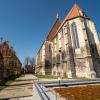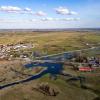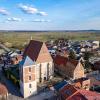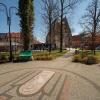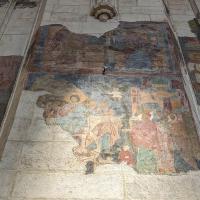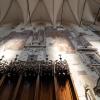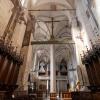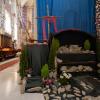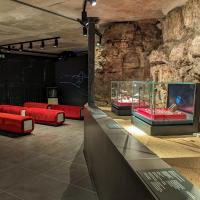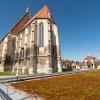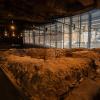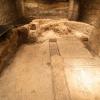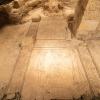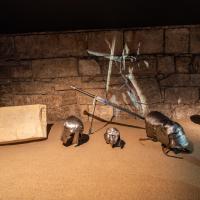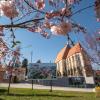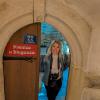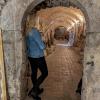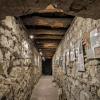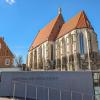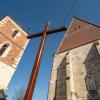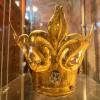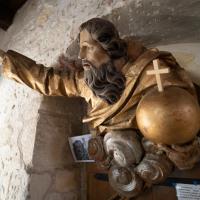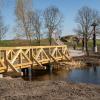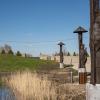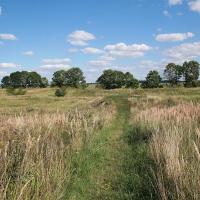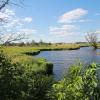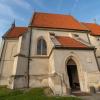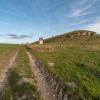Wiślica attractions. Monuments and interesting places to visit in Wiślica
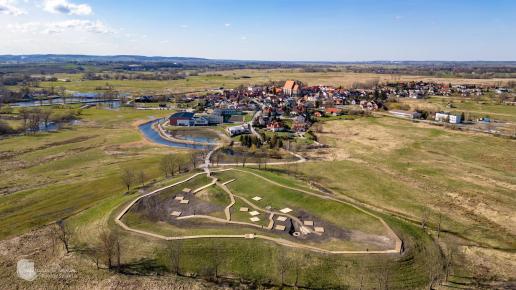
Wiślica at a glance, or hints for you
- Wiślica is tiny, almost all attractions are within sight
- You can park for free on the market
- Out of season, it is difficult to find an active restaurant here, there is a bakery/confectionery with sweet and dry pastries on the market all year round
- Be sure to visit the modern Archaeological Museum, offering a path leading through the basement of the basilica, with the foundations of as many as three Romanesque temples! With a unique floor, protruding human bones and a "baptismal bowl" (normal ticket PLN 20)
- Enter the gothic collegiate church of the Nativity of the Blessed Virgin Mary funded by Casimir the Great, with a valuable sculpture of the Elbow Madonna
- Visit the medieval Długosz House, a paid museum with interesting basements (normal ticket PLN 8)
Wiślica charmed us. Those who have not been here should regret it. If you like history, be sure to visit this amazing place. This tiny town, the second smallest in Poland, lies in the Świętokrzyskie Voivodeship, but has been associated with Małopolska for centuries. In the times of the first Piasts, it was an extremely important center, next to Krakow and Sandomierz. Wiślica is very much marked by history. And talking about the beginnings of our statehood. Yes, it is said that it was here that the oldest Polish baptism took place, almost 100 years before the famous baptism of Mieszko I.
Although today Wiślica has lost much of its importance, it has not lost its climate, a strong breeze of history and extremely valuable monuments of the Middle Ages. In addition, there is a modern museum, beautiful bends of Nida and unique plaster casts. See what this amazing corner of Poland offers you, in the Ponidzie region, just south of Busko Zdrój.
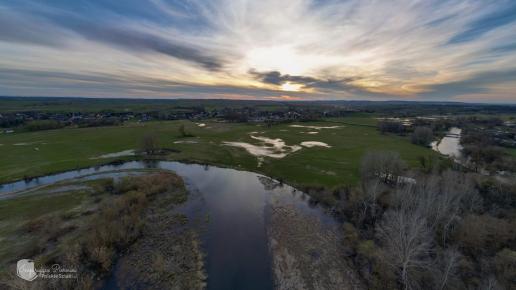
Monuments and attractions of Wiślica, or what to visit in the city
The city is famous mainly for its monuments, but also several interesting natural attractions can be found in the city itself as well as in the surrounding area. We have already walked the streets of this city twice and explored its curiosities. See our guide and see what is worth seeing in Wiślica. Here are the most interesting attractions of the city!
College in Wiślica - the best attractions
The Collegiate Church of the Nativity of the Blessed Virgin Mary in Wiślica is the most important building in the city. This Gothic building is a symbol of the city and its main decoration. It was erected in Wiślica in the fourteenth century and was founded by King Casimir the Great himself. Not out of need of the heart, but as part of repentance for sins. The canon of this object was none other than the famous chronicler, Jan Długosz, who founded the bell tower next to it.
This powerful structure was built on the site of two earlier temples. These, along with the nearby church of St. Nicholas, stood here in the early Middle Ages like the Holy Trinity.
The interior of the smaller basilica hides many valuable traces of the past, including a vault with coats of arms, frescoes or a 13th-century sculpture by MB Łokietkowa. Named so because, according to tradition, Władysław Łokietek prayed in front of her. It is the Madonna smiling with the child, visible in the altar, in the presbytery, which is definitely the most interesting part of the building. The basilica also houses the relics of St. John Paul II. Unusual curiosities hide the basement of the basilica, available for visiting as part of the modern Museum.
Address: ul. Kościelna
Archaeological Museum - a modern attraction of Wiślica
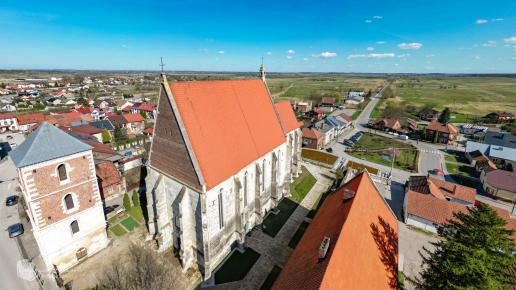
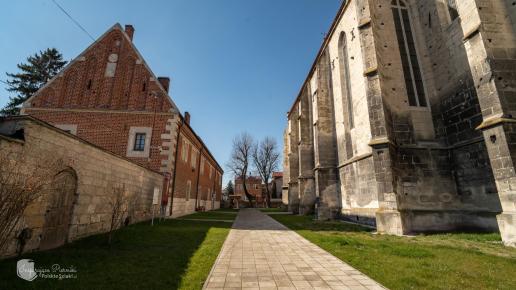
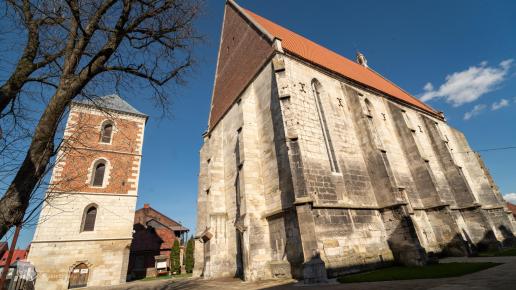
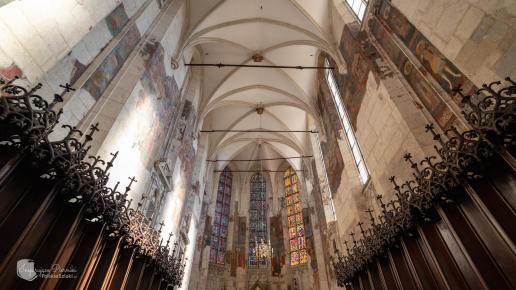
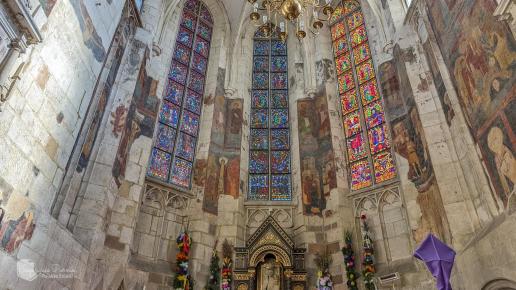
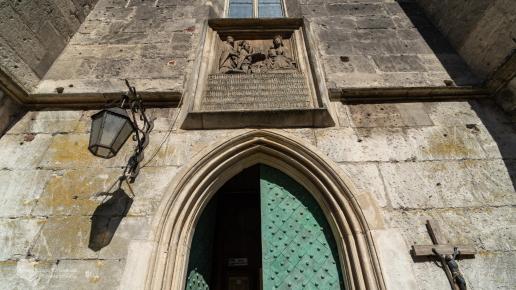
In the 20th century, the remains of two Romanesque churches were discovered under the basilica, which today are available to tourists for a fee as part of a very interesting museum. In recent years, it has taken on a very modern form, with many multimedia and extremely valuable artifacts.
Plate of Oranges and human bones
A great curiosity of a small church from the 12th century is the unique floor preserved in the basement, also from the 12th century, called the Plate of Oranges. It is a very valuable trace of Romanesque art, one of the most important and beautiful in Poland. It presents several figures, probably the founders: Kazimierz the Just, his wife Helena and son Bolesław. His brother Henryk Sandomierski and his second son are also visible here.
Next to it are the ruins of a slightly larger Romanesque collegiate church from the 13th century, which had a two-tower façade. In the layers of sediments, protruding human bones are visible. It's quite poignant and quite impressive!
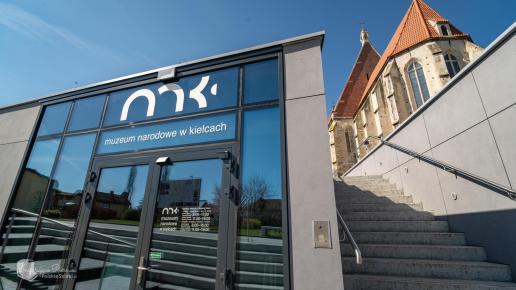
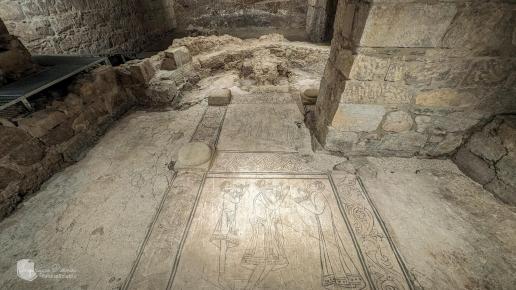
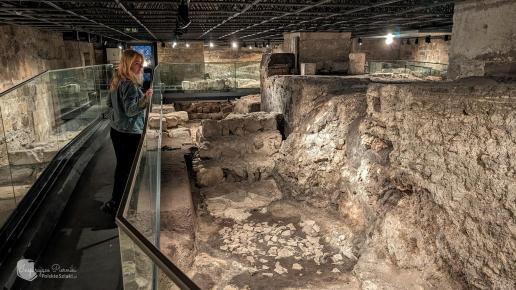
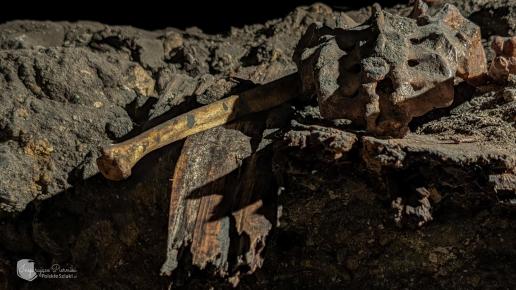
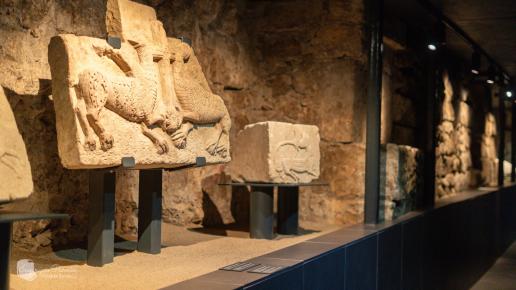
St. Nicholas Church and "baptismal bowl"
It seems that the oldest object in the city is the ruins of the nearby church of St. Nicholas, originally located in the archaeological pavilion, and today available within the same facility. They come from the 11th century and talk about the small shape of this single-nave church with an apse. It was demolished in the 13th century, during the construction of the city walls.
The Romanesque motto makes our ears and eyes open wide. And Wiślica is very astonishing in this respect, because a lot of such remains have accumulated. There is also a really unique curiosity. Among these ruins, the famous "baptismal bowl" has been going on for centuries. And that's where the questions come from.
It is a mysterious stone recess with a diameter of about 4.5 meters, made of plaster. There is a theory that it is a baptistery, or a baptismal bowl, in which Vistulans were baptized in the 9th century. This is mentioned in the legend of the Pannonian in the lives of St. Methodius. This saint, together with St. Cyril, Christianized the Great Moravia bordering Vistula. The legend mentions a powerful Slavic prince sitting on the Vistula, who "insulted Christianity and did it great harm". Apparently, he was forcibly persuaded by the prince of Moravia, Świętopełek, to accept Christ and this was to happen in this place in 880.
While the fact that the Vistulans adopted Christianity at that time is highly probable, its place was probably different, because this church did not exist at that time. Today, it is more likely that this niche served as a... mortar mixing bowl. So why was it preserved and why similar ones were found in Poznań? I'm curious, what do you think about it?
Address: Plac Solny 35, Branch of the National Museum in Kielce
https://mnki.pl/wislica/
Długosz House in Wiślica
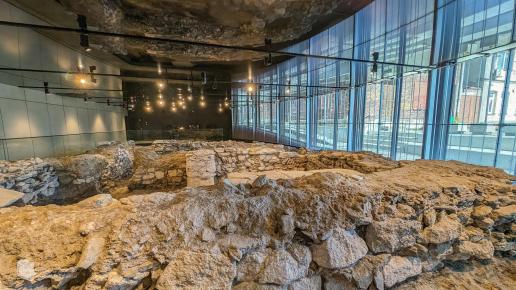
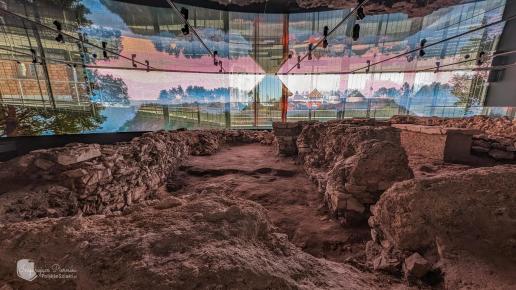
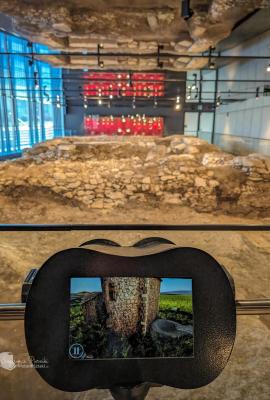
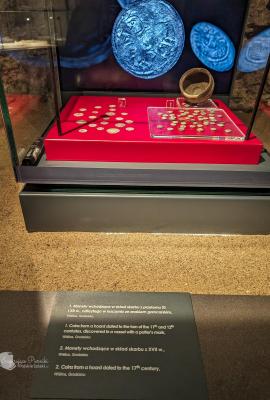
The building dates back to the 15th century, or more precisely from 1460, and is the foundation of, as the name suggests, the famous chronicler Długosz. It stands next to the collegiate church. From the beginning, to this day, it serves as the dwelling of priests serving here. The chronicler himself lived here as a canon and teacher of the sons of King Casimir the Jagiellonian.
"Feel free to use the rods and pour the science into your head." This is how King Kazimierz Jagiellończyk encouraged the teacher to teach his sons. I think he listened, because the sons did not like this city and Długosz himself.
The Gothic House is a brick two-storey building, designed on a rectangular plan. Beamed ceilings and remnants of polychrome from the period of the tenement house's construction have been preserved in the interior. The Chronicler's Coat of Arms appears on the beams. Part of the presbytery is open to tourists as part of a paid museum. Thanks to this, you can admire interesting sculptures, medieval and not only, valuable elements of church equipment and the aforementioned polychromes. As part of the ticket, you can visit the corridor on the ground floor and the basement. Upstairs, there are apartments of priests inaccessible to tourists.
Address: 22 Długosza Street
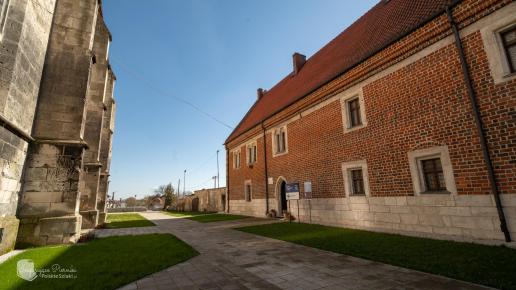
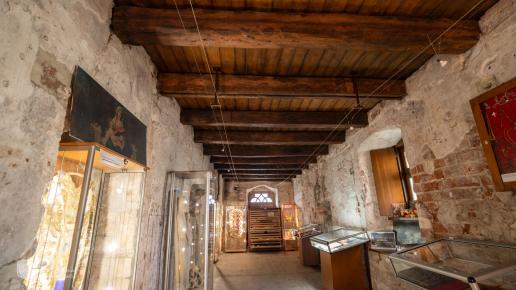
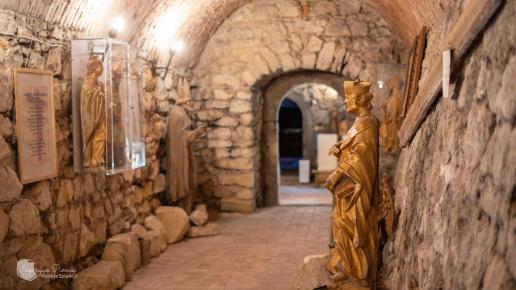
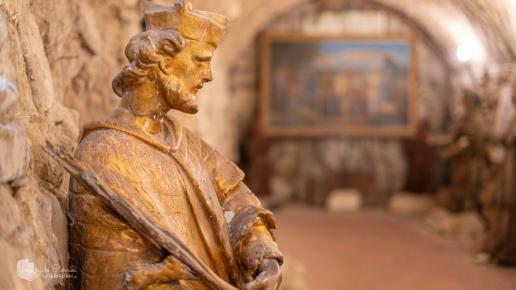
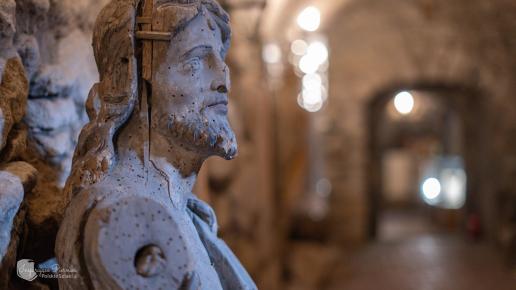
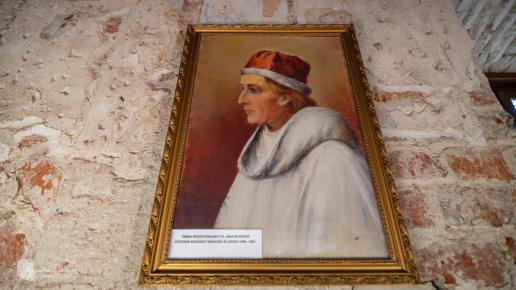
Grodzisko in Wiślica, revitalized urban space
The first open settlement was established here in the 9th century. During the time of Bolesław the Brave, in the eleventh century, a castle was built, replaced by a much larger one at the turn of the twelfth and thirteenth centuries. There were rows of half-ground stones with a pole structure, with stone hearths in the interiors. The castle protected the inhabitants and the route to Kievan Rus. During the research, many interesting artifacts were found here, some of them can be admired in the museum.
When we were here a few years ago, the place was practically undeveloped, and today it's really nice here. Walking bridges were created, allowing you to imagine the layout of fortifications, cottages and roads. There are also a lot of information boards here, expanding the knowledge of tourists about this place. The settlement was used until the 14th century. It was conveniently located and surrounded by water. She leaned against the towering gypsum rock. This place is located southeast of the market square.
Address: ul. Podgrodzie
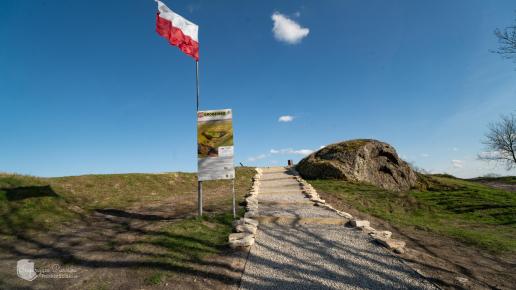
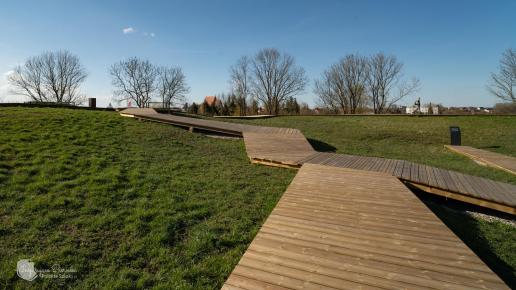
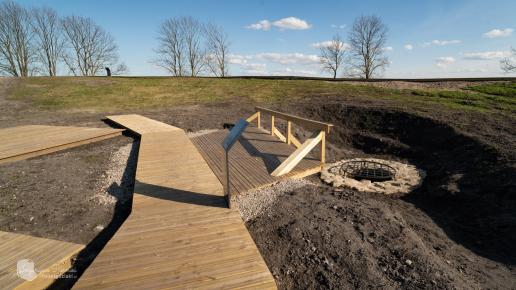
Psia Górka in Wiślica, or the story of Jadwiga and Jagiellon
Psia Górka is a small hill, located about 500 meters from the market square, in front of Grodzisk. The area has been nicely developed, with benches, sculptures, lighting and an impressive bridge over the Nida oxbow.
There is an interesting story associated with Pśia Górka. A certain Gniewosz from Dalewice accused Jadwiga of being unfaithful to Jagiello. The court ruled that it was a simple lie, so as a punishment he had to get under the bench and whisper that he "lied like a dog" and bark three times. He also paid an appropriate fine.
Address: ul. Podgrodzie
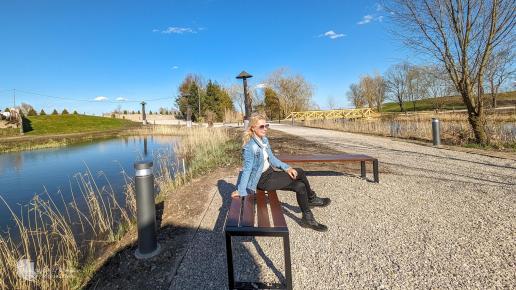
Nida's bend with an observation tower
The beautiful meanders of Nida can be admired in the Nadnidziański Landscape Park, which has its enclave here. Nida is probably the most beautiful river in the Świętokrzyskie Voivodeship. Its beauty helped us appreciate the Ziemowit drone, because the vast spring backwaters effectively cooled our enthusiasm for walking.
However, I recommend a walk in these areas in the drier seasons, because there is even a low observation tower waiting here. It can be reached from Tysiąclecia Państwa Polskiego Street. Just enter the path near the cemetery.
Address: Tysiąclecia Państwa Polskiego Street
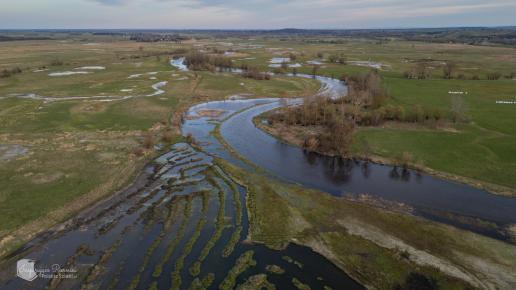
Beach on the Nida in Wiślica
You will see Nida's picturesque bends on Sportowa Street. A bridge, a beach and thatched umbrellas were built here. In high season, you can use kayaks. There is a car park on site.
Address: ul. Sportowa
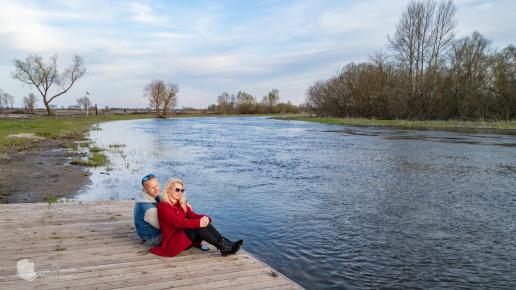
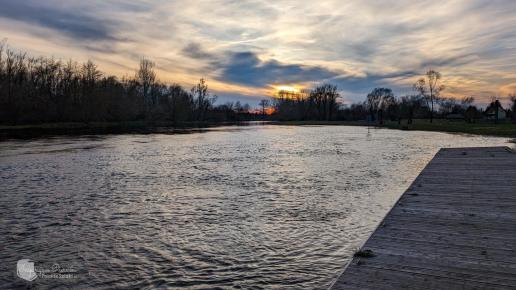
Other monuments in Wiślica
- The bell tower in Wiślica, Kościelna Street - a free-standing tower next to the basilica, founded in the 15th century by Jan Długosz
- Market Square - a square with a 1000-year history
- Salt Square - a nicely developed square located at the back of the basilica, it is here that the modern Archaeological Museum in Wiślica operates
- The foundations of the church of St. Martin in Wiślica, Podgrodzie Street - stood at the Castle Gate, was built as a brick in the 16th century, it was surrounded by a cemetery
- The foundations of the Church of the Holy Spirit in Wiślica, ul. Batalionów Chłopskich - it was a hospital church, at the Krakowska Gate, outside the city walls. In the 15th century, a wooden cemetery, already brick in the 17th century, was built next to it, where the bodies of those drowned in Nida were buried
- Figure of the Passion of the Lord, Solny Square, stone chapel on a pole from the 17th century
- Kirkut, ul. Tysiąclecia Państwa Polskiego, the Jewish cemetery in Wiślica has not been preserved in good condition
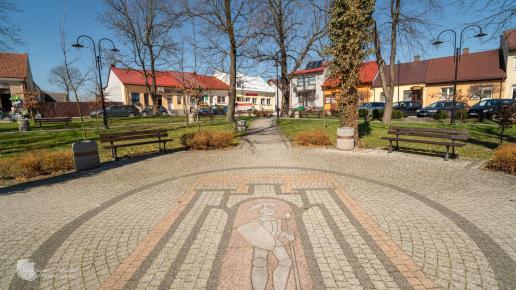
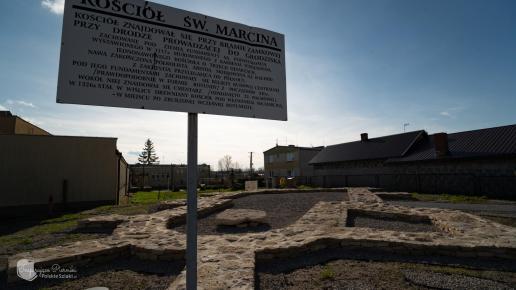
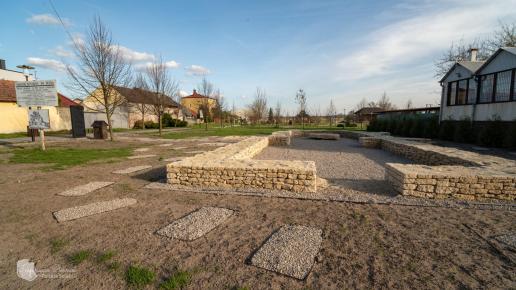
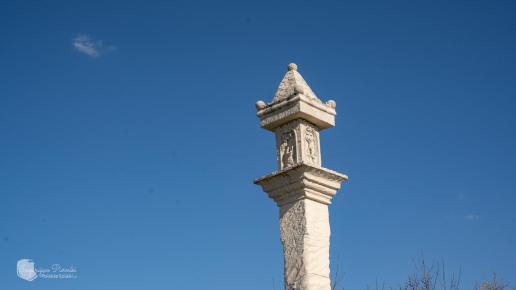
Attractions in the vicinity of Wiślica
In the immediate vicinity of the city, it is worth visiting an interesting Renaissance church in Gorysławice. A little further on, I recommend Chotel Czerwony. There is the so-called daughter of the Vistula collegiate church. It is a noble, gothic temple that resembles a miniature prototype. It was founded by Jan Długosz. It will be decorated with many beautiful monuments from the 15th and 16th centuries.
Largest gypsum crystals in the world
You will also find an interesting unique item in Chotl. It is a Crosstalk Reserve and one of the world's largest outcrops of gypsum crystals. Here, they create characteristic forms in the form of "swallow tails". They are even 2 meters high and glisten wonderfully in the sun.
In places, they even create reflections and resemble a mosaic made of mirrors, similar to the famous backyard - the Rose Passage in Łódź. Some people even say "glass" about these plaster casts in the Ponidzie region. Here you can find the extremely rare steppe beetle Ziołomirka. It occurs only in 3 places in the world. However, we were unlucky with him.
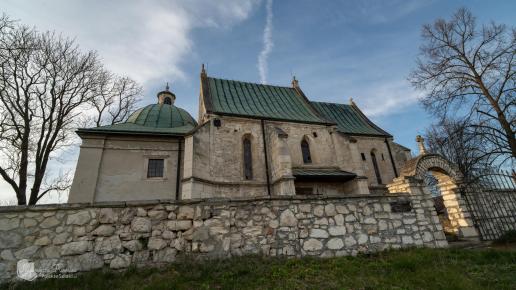
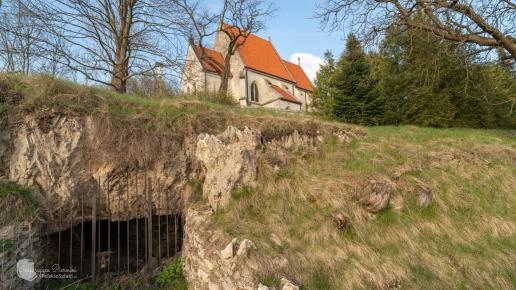
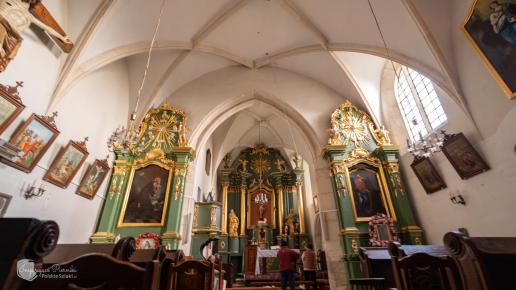
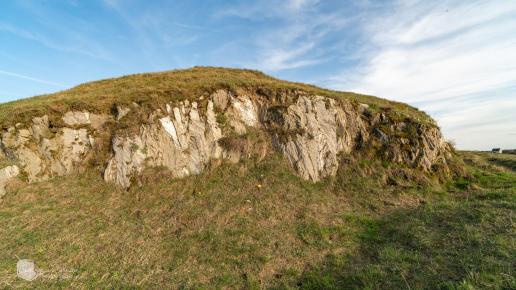
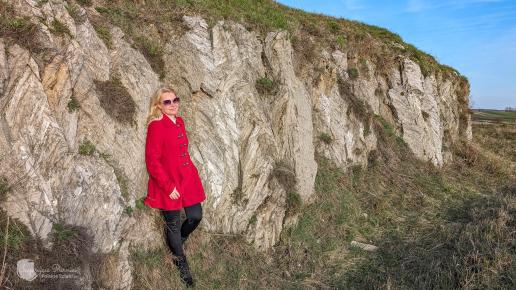
Map of Wiślica attractions
Below, we have marked on the map the monuments of Wiślica and other attractions that are worth considering when visiting the city.
Our video about Wislica
I invite you to watch our film about this atmospheric city.
History of Wiślica
Wiślica Stara is like Poland itself! This charming town in Ponidzie existed already in the early Middle Ages, around the 9th century. It experienced its greatest prosperity in the period from the 12th to the 14th centuries. It was then that the most monuments were created here, the number of which today shocks in such a small area.
In the fourteenth century, the king of Poland, Casimir the Great, significantly contributed to the development of Wiślica. He founded a magnificent collegiate church here, and from its window (today walled up) he announced the Wiślice Statutes. This took place in 1362. These were the first legal collections for Małopolska. Although it is now Świętokrzyskie Voivodeship, in the times of the first Piasts Wiślica, next to Kraków and Sandomierz, was the most important settlement in Małopolska.
The said king was not the most faithful of men. His love conquests were widely commented on. This did not escape the attention of Father Marcin Baryczka from Krakow, who threatened the king with excommunication. The preacher was arrested, and shortly after his body was found in the Vistula. As part of the penance, the king funded many sacred objects, not only those in Wiślice.
Currently, the city has lost its importance and for a long time remained the smallest city in Poland, until 2019, when the nearby Opatowiec gained city rights and replaced Wiślica in this topic. It itself has about 300 inhabitants, while Wiślica has about 500 inhabitants.
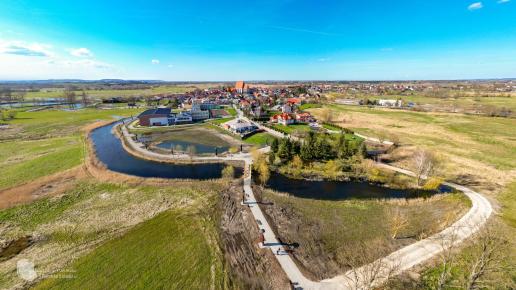
Where did the name Wiślica come from?
If Wiślica, where is the Vistula? Probably everyone associates this name with the queen of rivers in Poland. But Nida flows through the city. The Vistula flows 10 kilometers away. So why such a name? From Vislimir, the legendary founder of the city. It is said that he was baptized here in the 9th century.
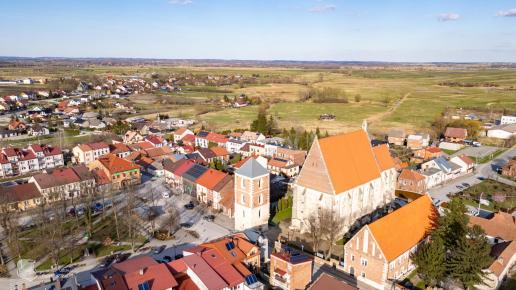
Where to eat in Wiślica?
The city is so tiny that, unfortunately, you will not find any restaurants or pubs here, at least during the off-season. There is only a patisserie on the market all year round, or rather a bakery with a patisserie, where you can buy something sweet for coffee and possibly some sandwiches and this type of bakery. The choice is quite large, and the bread is very tasty. There are 2 chairs and a tiny table waiting for you. There are also ice creams with traditions next door in the same frontage, but open only during the season.
In nearby Gorysławice, there is the Kasztelański Inn, but it also most likely does not work all year round, because it was marked as temporarily closed on Google maps in March. So it is worth checking before the visit. You only need to look for a restaurant in Busko Zdrój. It is about 20 km and 20 minutes by car.
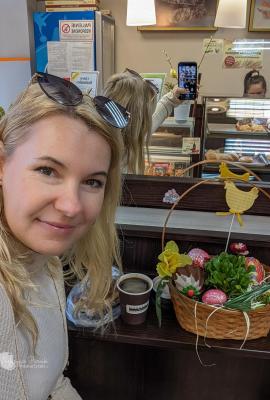
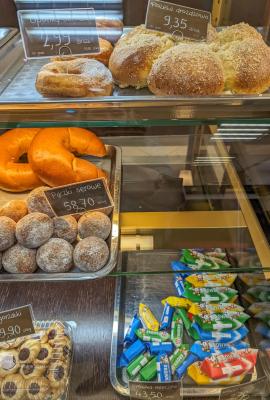
Accommodation in Wiślica
